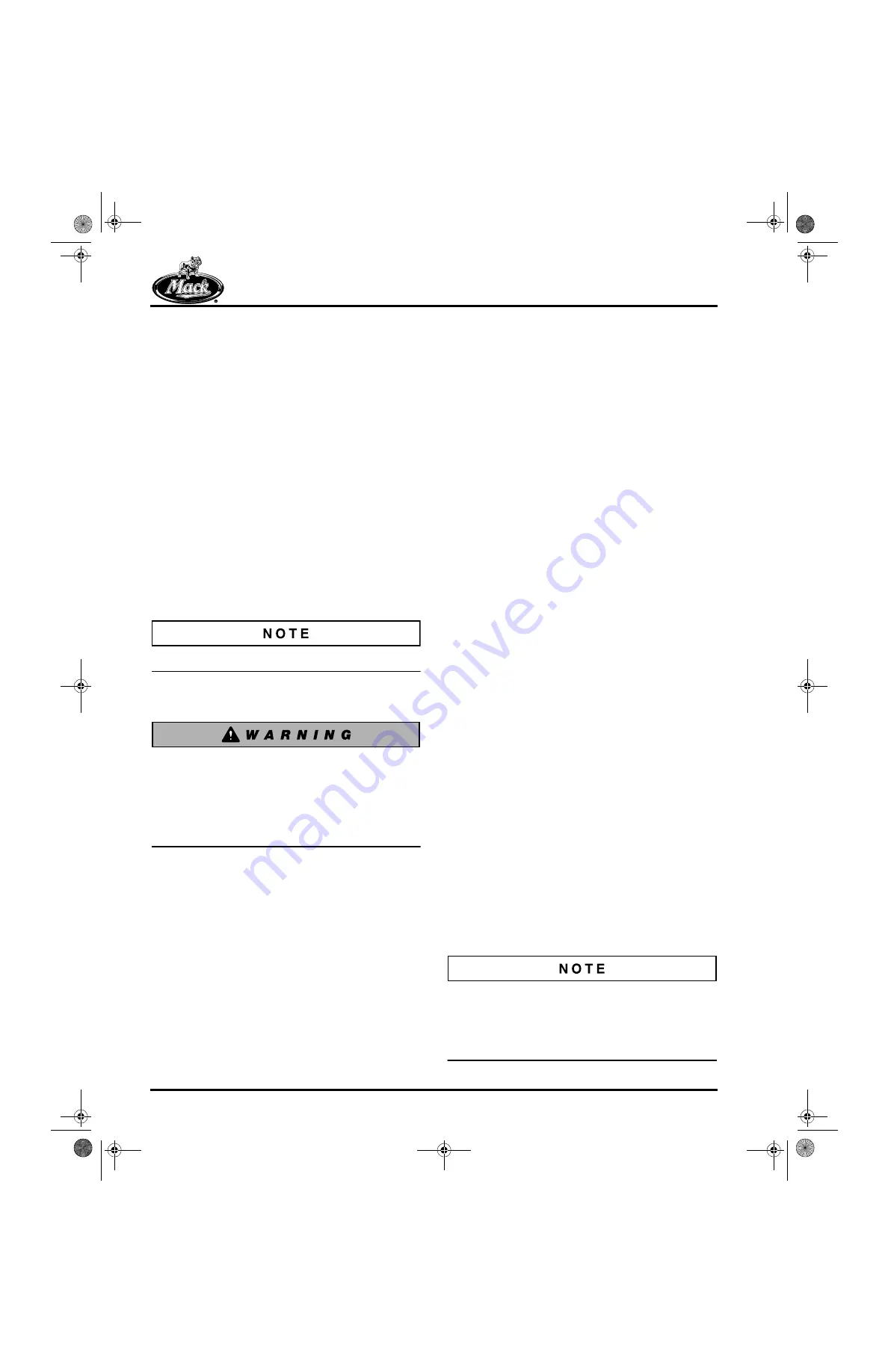
Page 82
TROUBLESHOOTING
6. Check the screw and pin assembly to
ensure that the pin is not bent or damaged.
The pin should not stick in the screw at any
point in its travel. There should be no signs
of mushrooming or other damage where the
slave piston contacts the screw. Check to
ensure that the retainer is in place on the top
of the pin, making the pin captive in the
screw. Replace the screw and pin assembly
as a unit, if necessary.
7. Remove and inspect the reset screw. A
spring-loaded plunger located at the bottom
of the screw seals the hole in the slave
piston to provide proper master/slave
operation. A stuck plunger or any debris will
cause the hole in the slave piston to be
uncovered prematurely, dumping oil
pressure and shutting down the circuit. The
reset screw prevents overtravel of the slave
piston and exhaust valve to engine piston
contact.
Reset screw assemblies are not field serviceable.
8. Remove the slave pistons, using the
following procedure.
Wear safety glasses.
The slave piston is retained by springs that
are under heavy compression. If the following
instructions are not followed and proper tools
not used, the springs will be discharged with
enough force to cause personal injury.
SLAVE PISTON REMOVAL
1. Remove the locknut on the slave piston
adjusting screw. Back out the adjusting
screw until the slave piston is fully retracted
(screw is loose).
2. Place the hole in the slave piston clamp
fixture over the slave piston adjusting screw.
Replace locknut. Finger-tighten to hold
fixture securely.
3. While holding the fixture in position, screw
the holder down over the slave piston until
the spring retainer is contacted.
4. Turn the handle slowly until the retainer is
depressed to about 1/32 inch (1 mm),
relieving pressure against the retaining ring.
5. Remove the retaining ring using retaining
ring pliers. Back out the holder until the
springs are loose, and remove the fixture.
Remove all components, ensuring that there
is no binding or burrs. Clean in an approved
cleaning solvent. Inspect parts and replace
as necessary.
6. A shiny, smooth contact surface on the reset
screw plunger and slave piston is normal. If
a rough surface exists on the plunger and/or
slave piston, replace the parts. There should
be a light spring force on the plunger and it
should move freely. If not, replace the reset
screw assembly.
7. Use the clamp fixture to reinstall the piston
and springs. Be sure the retaining rings are
placed on the retainer before screwing the
clamp holder down.
8. Compress the slave piston springs down
until the retainer is about 1/32 inch (1 mm)
below the retaining ring groove. Reinstall the
retaining ring. Be sure the retaining ring is
fully seated in the groove.
9. Remove the clamp fixture slowly to ensure
proper seating of retaining ring.
Final Test
Follow the instructions in the installation manual
to reassemble the housings. Install a new oil
supply seal ring.
1. Install the housings on the engine and adjust
the slave piston clearance to the proper
settings shown in the Table on page 80.
2. Before installing the engine covers, start the
engine and allow it to warm up for a few
minutes.
3. Depress the solenoid valve several times to
fill the housing with engine oil.
Engine brakes require a minimum oil pressure for
operation. If there is less than minimum at idle,
run the engine at higher rpm (800–900) when
making checks. See the Table on page 81 for oil
pressure requirements.
5_106_00.bk Page 82 Friday, August 4, 2000 11:17 AM
BDC for engine manuals and specs






























